Albino and leucistic animals, although they are rare in the wild, have nonetheless been sighted in our oceans swimming among their herd or on land in the vast savannas and forests.
These creatures inhabit various ecosystems, while some of them have been born in zoos and sanctuaries. In some cultures, when an albino (or leucistic) animal is born, it signifies a sacred or auspicious event. However, these unique animals encounter difficulties in their natural habitat and are exposed to more threats in terms of being the prime targets for predators and being hunted down by poachers.
Animals with albinism or leucism have complete or partial loss of pigmentation, which results in their pale skin color in comparison to other members of their species. For albinism to occur in mammals, the offspring has to inherit one or more of the recessive gene from both parents. These mutated genes interfere with the production of melanin, the pigment responsible for the color of the skin, eyes, hair and scales. It is within melanocytes — these specialized cells that are present but not completely functional in albino mammals — that the production of melanin takes place.
1. Extremely rare albino Plains Zebra (Equus quagga) in Kenya, Africa

Credit: Ryan M.Bolton
2. An extremely rare white penguin spotted in the Galapagos Islands
It is believed to be the first in the history of the islands.
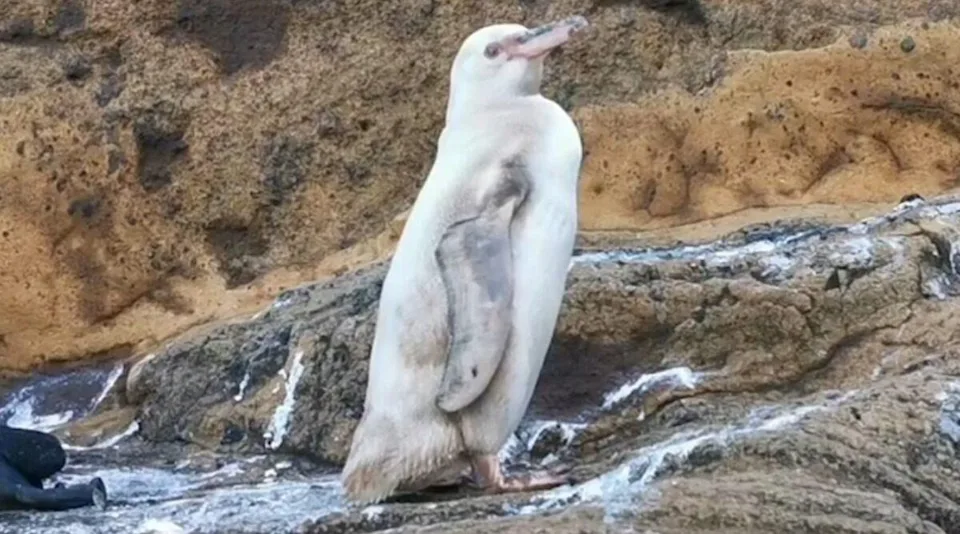
3. A rare albino Wallaby joey, named Alisa, is seen inside an enclosure at a zoo in Kazan, Russia

4. Migaloo, the white Humpback whale was first spotted in Australian waters in 1991
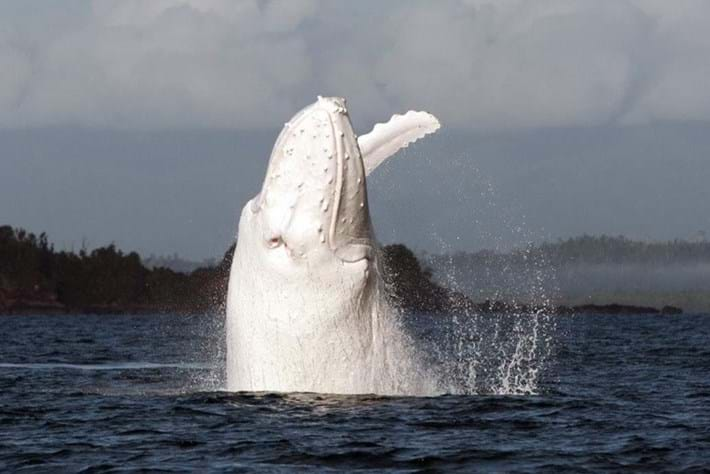
Credit: Jenny Dean
Although a lot of albino animals are seen as having pink or red eyes, nails, and skin or scales, it is a general misconception to associate these characteristics with all albino animals, since this is not the case in some forms of albinism. These distinct features are due to the lack of pigment in the iris, thus exposing the blood vessels of the retina, and also the blood vessels showing through the skin, resulting in the pink coloration.
5. Alba, the world’s only known albino Orangutan
Alba was released in a Borneo rainforest in 2017 by the Borneo Orangutan Survival Foundation. She had been kept in a cage as a pet by villagers in Indonesia’s section of Borneo, known as Kalimantan.
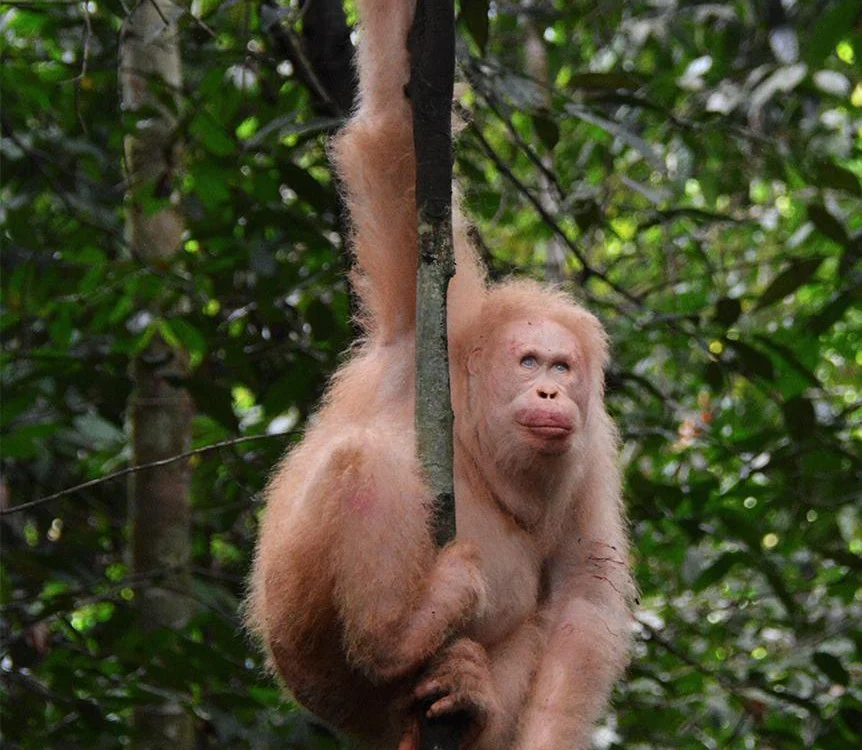
Credit: Borneo Orangutan Survival Foundation 2020/ Indrayana
6. An albino Killer whale (Orca)
In August 2010, an albino Orca was spotted by whale researchers working in the western North Pacific.

7. A white Lioness

As for leucism, this concerns various conditions that result in the partial loss of pigmentation in an animal. This genetic mutation prevents melanin and other pigments from being deposited in feathers, hair, skin, scales or cuticles, thus producing overall pale, white or patches of reduced coloration, except for the eyes.
Albinism does not only concern mammals, as non-mammal animals can also be albino, although they may not look completely white since they are capable of producing other pigments apart from melanin. As well, some albino mammals can produce some color, given that the melanin-producing genes haven’t been entirely damaged.
8. A white Reindeer

9. A Japanese Rat snake with rare albinism is seen at a snake viewing facility in Iwakuni, southwestern Japan

10. Albino Alligator
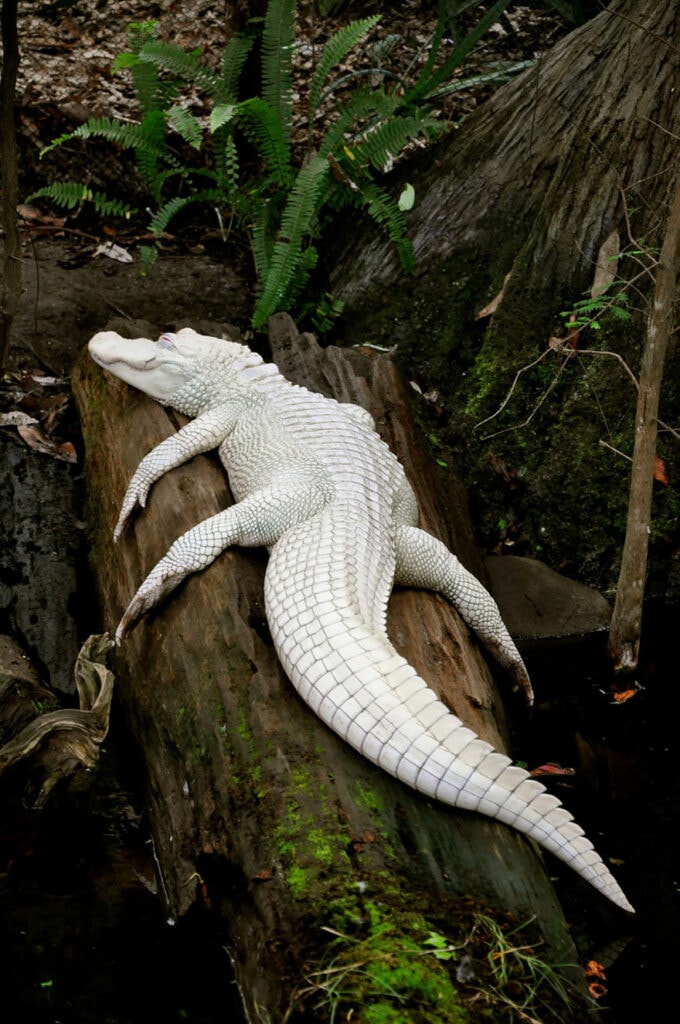
However, not all white animals are albino, as some are simply light-skinned, or they may have other genetic conditions such as leucism (already mentioned above) and isabellinism. One way to tell whether an animal has albinism or not is by checking the eyes, which usually would be pinkish in color due to the absence of the pigment that conceals the blood vessels.
11. A white Deer family
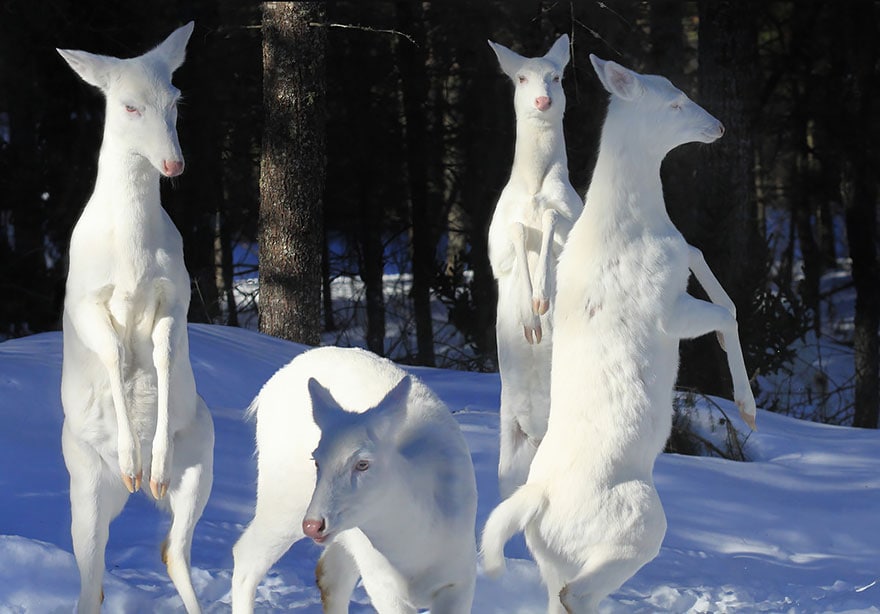
12. An albino Hedgehog
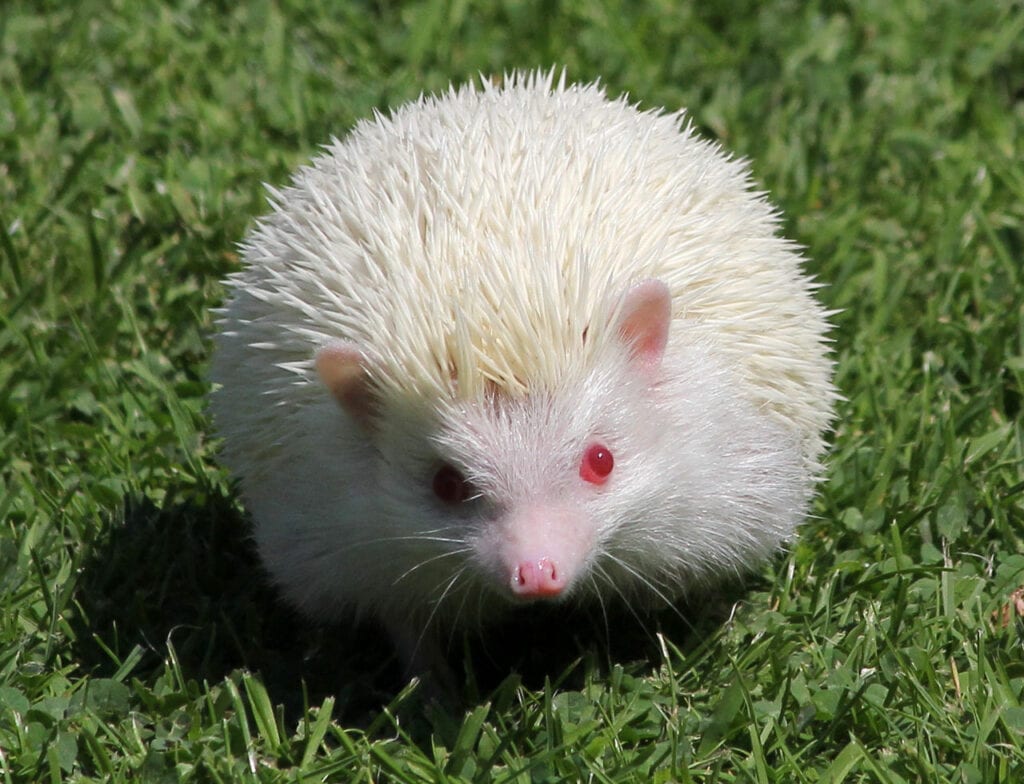
Credit: Dunpharlain via Wikimedia Commons
13. Snowflake, an albino Gorilla when he was young
He was one of the most well-known albino zoo animals, featured in National Geographic magazine, but he died from skin cancer in 2003. A 2013 study of Snowflake’s genome revealed that his albinism was likely a result of inbreeding, in this case, an uncle-niece pairing. Both of Snowflake’s parents carried the same mutant form of a gene that caused his albinism.
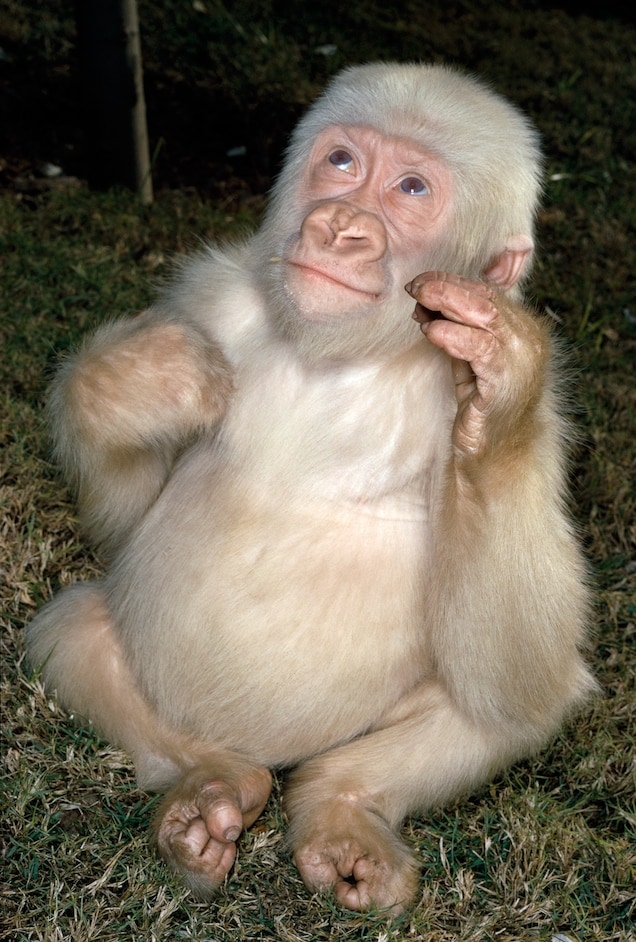
Albino animals in the wild come across numerous obstacles and threats. Apart from their striking appearance that makes them extremely conspicuous, these animals often have poor eyesight, which complicate their ability to hunt for food, and avoid risks and danger. In fact, melanin is crucial in eye development, therefore with it lacking, irises, retinas, eye muscles and optic nerves may not form properly. Also, melanin is an effective absorbent of infrared light, visible light and ultraviolet radiation. With their eyes not functioning adequately, there are issues that can arise with focusing, depth perception and tracking.
14. An albino Turtle
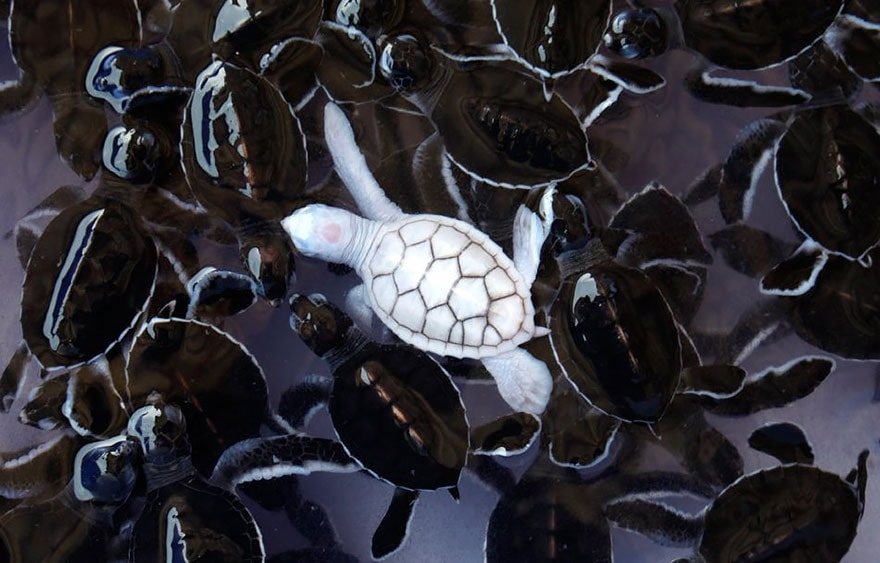
15. A cute albino Kangaroo joey spotted with its mum at Gorge Wildlife Park in South Australia

Credit: Majella Photo Art
16. An albino Tawny frogmouth
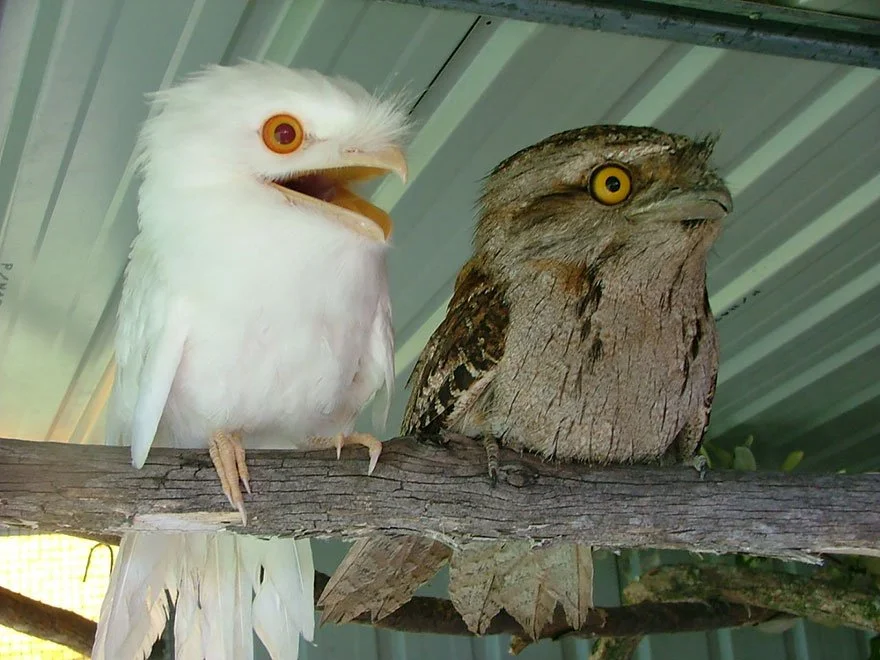
As an albino animal, their light-colored appearance makes it difficult for them to camouflage themselves effectively against predators, making them more susceptible to attacks and being eaten. Unlike other ‘normal’ animals that have cryptic coloration, markings or patterns which help them to blend in with their environment, albino animals really stand out among green vegetation. For instance, albino alligators are more easily targeted by predators, and they are often eaten before they can even attain adulthood. Nonetheless, there have been cases where an albino animal was not actually recognized as prey due to their unfamiliar coloring and appearance.
17. Meeko, the albino Raccoon
Meeko was taken to a wildlife rehabilitator to be hand raised after he had been rejected by his mother and became too tamed to be released back in the wild. Meeko has been living in the care of the Cleveland Museum of Natural History (Division of Wildlife Resources).

18. Leucistic peacock
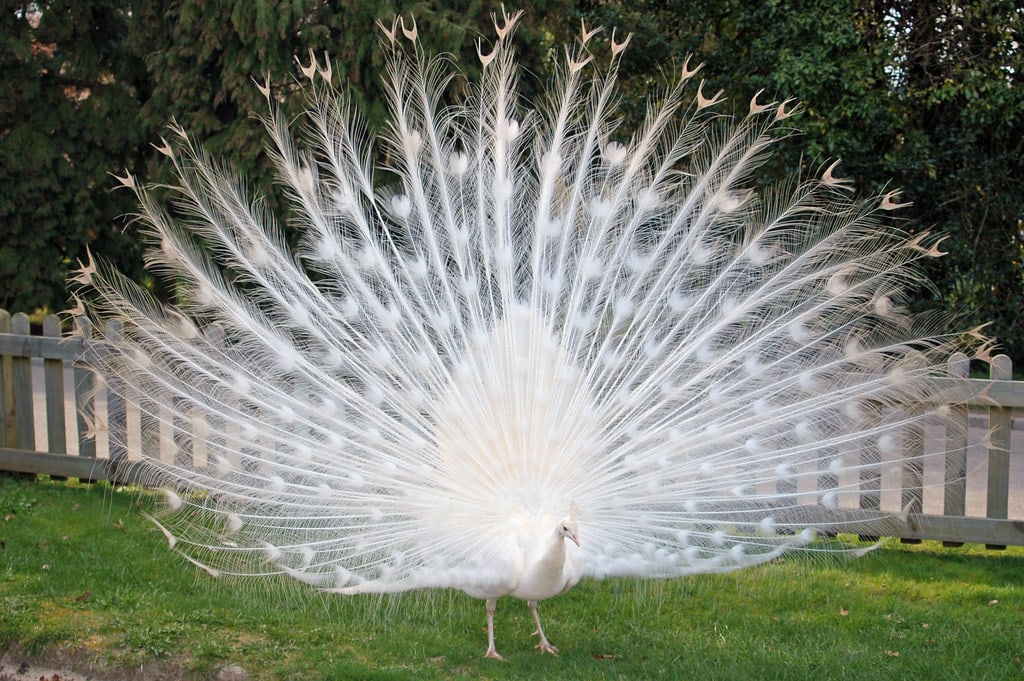
Credit: Stefan Willoughby / Flickr
19. The White Lion
This rare color mutation is caused by a recessive trait called leucism. But unlike albino animals that lack pigmentation, these rare genes in white lions produce lighter pigmentation. White lions have blue or gold eyes and males may have near-white, blonde or pale hair in their manes and on the ends of their tails.
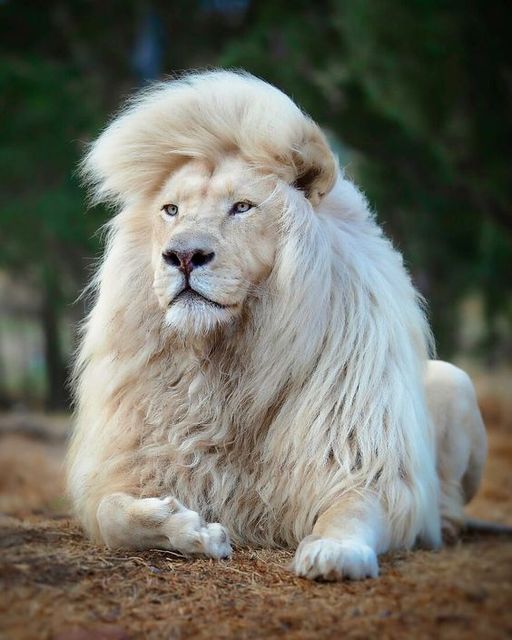
Credit: Simon Needham / Instagram
Another problem experienced by albino animals is that they are subjected to a higher risk of developing melanoma. Melanin helps to protect the skin from the damaging rays of the sun, and since albino animals are devoid of this pigment, this can be troublesome for species that usually bask in the sun. In that sense, albinism seriously reduces the survivability of the animals, often leading to their deaths. For example, it has been suggested that albino alligators have an average survival span of only 24 hours since they are unprotected from UV radiation.
20. An albino Ruby-throated Hummingbird in Carrol County, Maryland
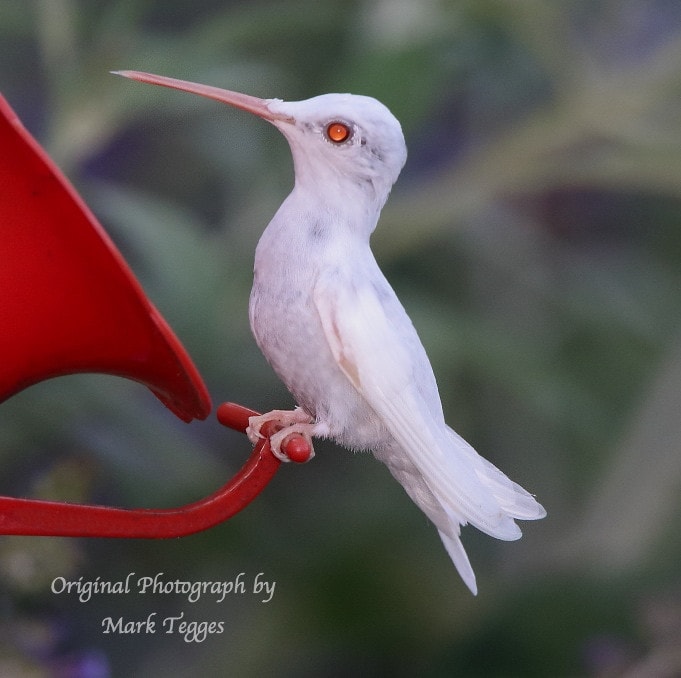
Credit: Mark Tegges
21. An albino squirrel spotted wandering in a back garden in North Dulwich, London, England
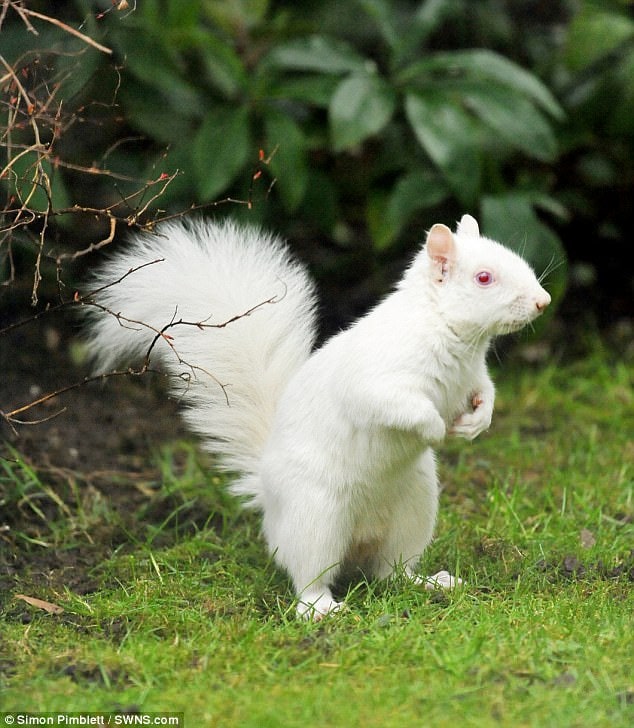
Credit: Simon Pimblett
Read Also: Manja, The Rare Melanistic Serval Cat Roams The Serengeti In Tanzania
22. A rare White moose spotted in Ontario, Canada
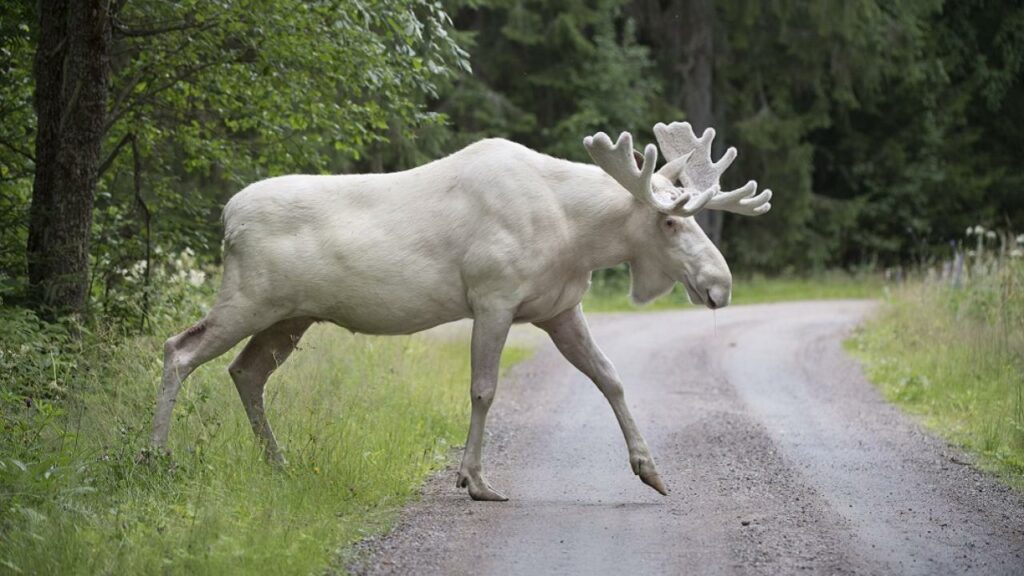
Credit: Tommy Pedersen/CP
Moreover, animals with albinism may undergo some trouble when trying to find a mate. Birds can have more difficulty when it comes to finding a partner to mate with, since usually many species use their strikingly colored plumage to attract a mate. Therefore, a pale or white colored bird is more likely to get rejected.
23. A rare albino Crow
The crow was brought to the Burnaby wildlife rehabilitation centre where it recovered, after it was discovered by a good samaritan, who noticed it appeared lethargic and was not able to fly.
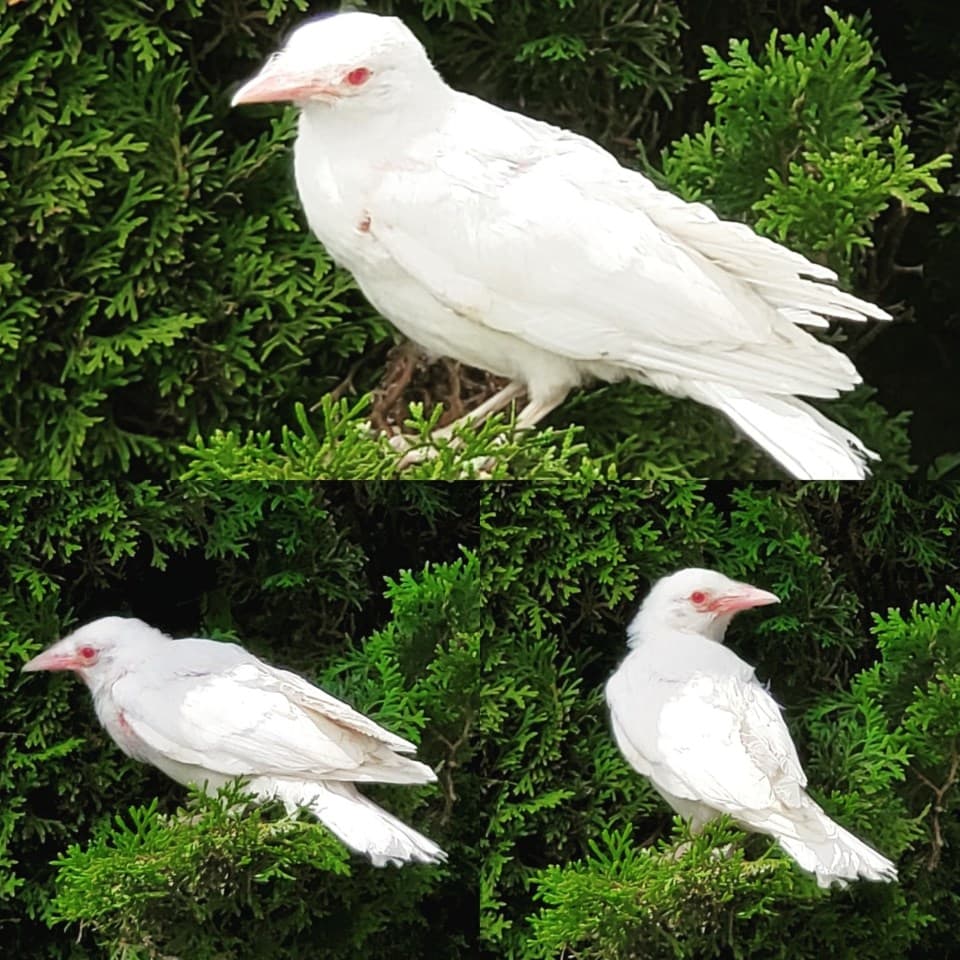
Credit: Gary Logan
24. An albino Nutria
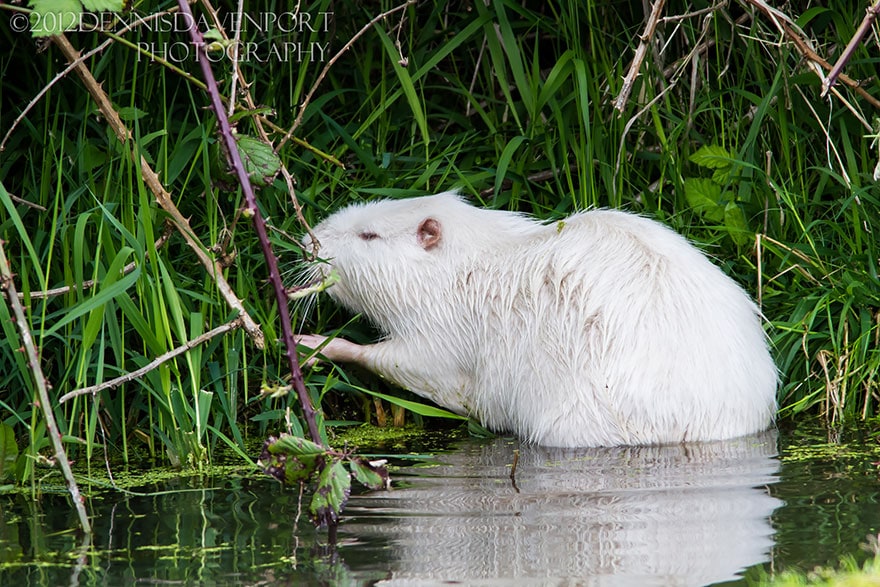
Credit: Dennis Davenport Photography
25. Goolara, an albino Koala born at the San Diego Zoo
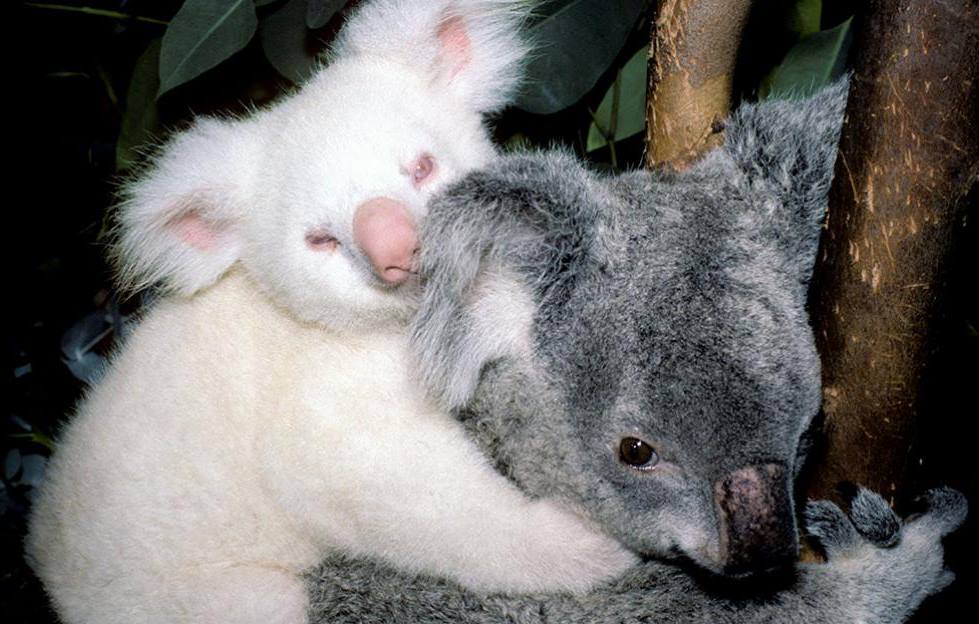
Since albino animals really stand out from the rest of the crowd, they are unfortunately also more vulnerable to poachers who are looking for any opportunity to meet the growing demand for exotic pets or products derived from these rare critters. As such, many albino animals are sent to zoos or sanctuaries to provide them with a more secured environment than if they were left in the wild, exposed to many threats and dangers. Indeed, the threat is so substantial that a nonprofit organization even bought an island off Indonesia in order to construct a sanctuary for an albino orangutan that moved there in June 2019 and was to live with a round-the-clock surveillance by security guards.
28. An albino Tapir photographed via a camera trap in Votorantim Reserve, Brazil
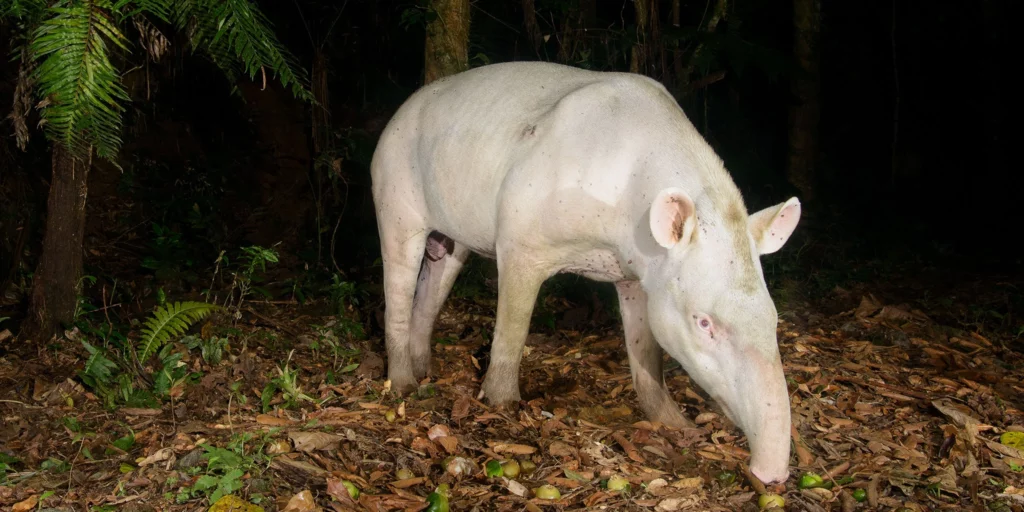
Credit: Luciano Candisani
29. A rare yellow Indian Flapshell turtle found by a farmer in October 2020 in Burdwan, West Bengal, India
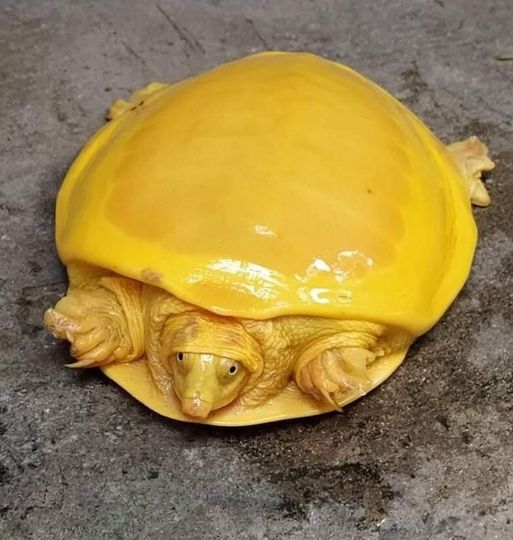
Credit: Debashish Sharma
30. An extremely rare albino Elephant calf spotted at Kruger National Park, South Africa
The calf was among its herd and drinking water with its mother. Its pink skin stands out from the grey skin of its mother and the other elephants in the herd.

Credit: Nicki Coertze / Caters
Apart from poachers, trophy hunters are also the ones who seek after rare animals. An example is the albino deer, which really attracts hunters, although it is against the law to hunt them in several U.S. states. However, on a more positive note, it has been reported that there are some albino animals that do thrive in the wild. For instance, in Olney, Illinois, there is a quite large population of albino squirrels, about a hundred of them. It is even encouraged to feed them, and there are laws passed to protect them from being hit by vehicles.
31. This rare white Giraffe, named Omo, was first sighted in 2015 in Tarangire National Park in Tanzania
Omo has leucism and she has always been seen with a large group of normally colored giraffe – they don’t seem to mind her different coloration.
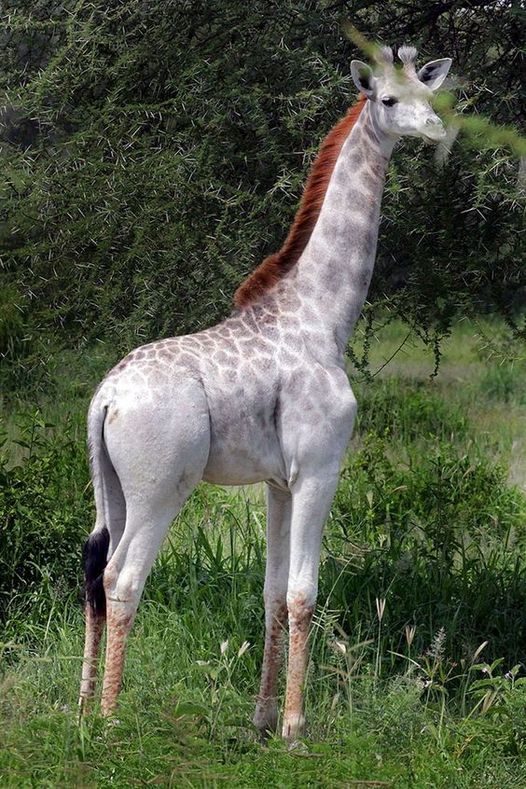
Credit: Dr Derek Lee (Wild Nature Institute)
32. A white Risso’s dolphin spotted in Monterey Bay, California

Credit: Daniel Bianchetta / Monterey Bay Whale Watch
33. An albino Burmese Python
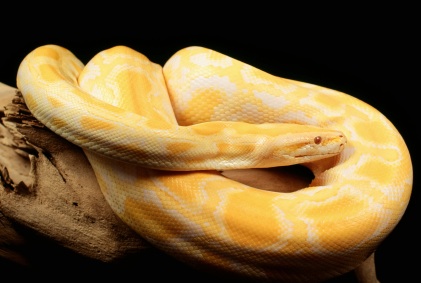
34. An adorable blonde Seal pup was captured on camera in the South Georgia Island
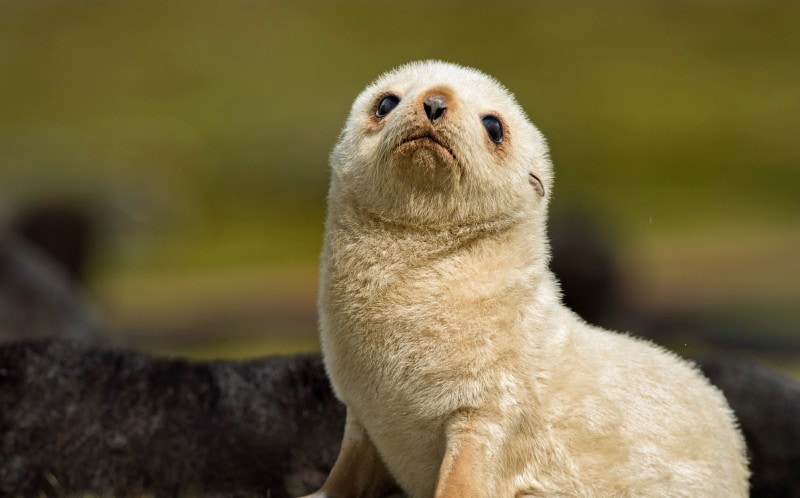
Credit: Roie Galitz
Src: illuzone.net








